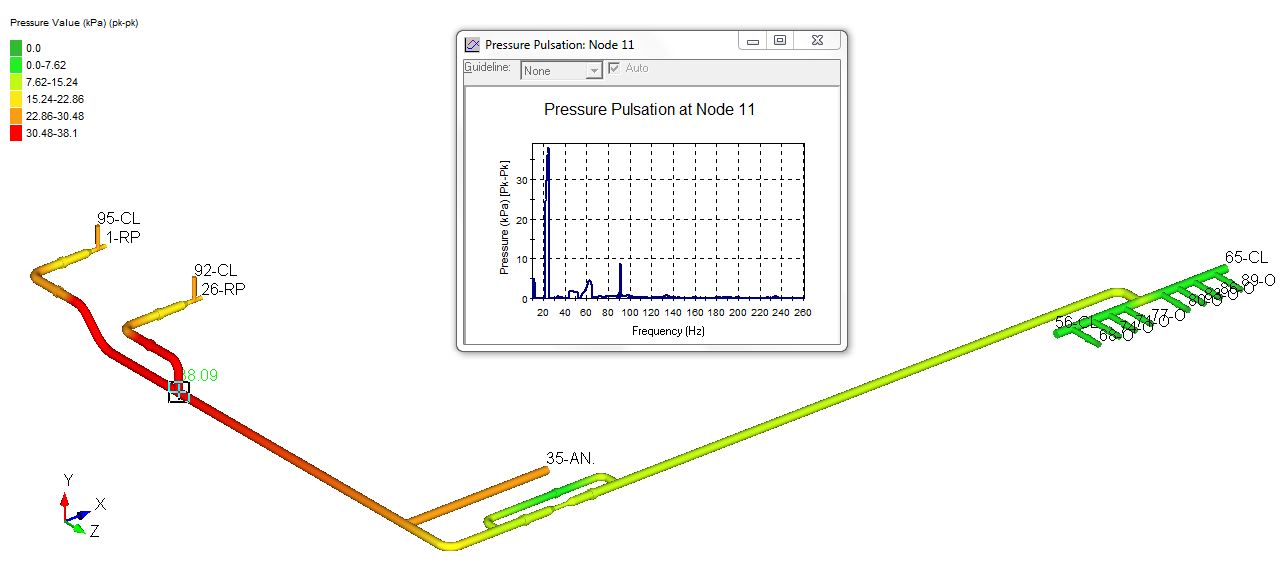Objective: Piping systems are a central part of numerous engineering installations. A number of sources such as pumps generate vibrations which can propagate along the pipes and excite other structures. These vibrations can cause two main problems, namely mechanical fatigue and acoustical noises. Further, interaction of the dynamic flow generated by the pump plungers with acoustical resonances in piping systems can result in high pressure pulsation levels pump and piping, cavitation, excessive vibrations and failures. Moreover, higher frequency fluid borne noise can be generated from flow perturbations associated with elbows, valves or cross section changes in the pipe. This design approach in conjunction with pulsation simulation is required to couple technical analysis of piping system to ensure that the piping will have adequate supports and clamps to maintain mechanical natural frequency of major acoustical energy.
Modeling and Analysis: The first design approach involved pulsation and vibration control through the use of good piping layout and support principles, adequate suction pressure and use of pulsation control devices such as dampers, accumulators, preventers, hydraulic isolators, inhibitors, suppressors, stabilizers, acoustic filters and selected piping configurations.The acoustical simulation techniques predict the potential of cavitations and the required minimum suction to prevent cavitations, based on amplitudes of the pulsations. The results obtained from the analysis proved that the pulsation levels at the suction end were considerably reduced and the pulsation levels were found to be under API 674 standards. Based on the pulsation amplitudes at various frequencies harmonic loads acting on the pipelines were calculated. These harmonic loads were applied at respective nodes and a FEM based harmonic analysis was done to determine the natural frequency of the system and response of the system to harmonic loads arising from pressure pulsations.

Conclusion: From the analysis the pipeline was first tested for the given set of pulsation damping equipments and reciprocating pumps. It was observed that the old configuration did not provide the desired pulsation control in the system. We observed amplification in pulsation in the suction side which was much above the values accepted by API and cavitations were observed at the suction end of the plunger. To reduce the pulsation it was therefore suggested that an additional pressure dampening equipment of size 1 liter must be installed 0.55 m from the suction end of the reciprocating pump. Further the analysis done on the pipeline with the additional dampening accumulator shows considerable reduction in pressure pulsation and the pulsation amplitudes were much below the allowable limits








